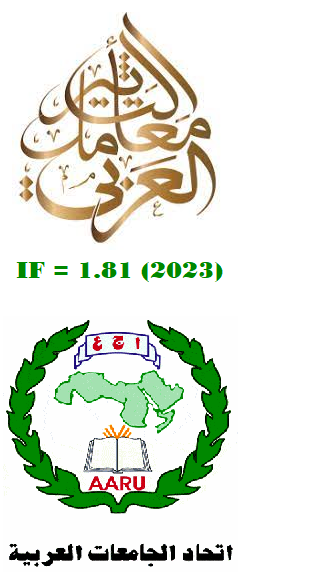The Factors Affecting Customer Relationship Management Implementation at DHL Company in Baghdad, Iraq
Abstract
Customer relationship management, CRM, has the ability to achieve success and growth of enterprises in the present time’s environment of broad competition and rapid technological development. CRM helps organizations to know the customers well and to establish sustainable relationships with them. The main goal of this study is to investigate the factors affecting CRM implementation at DHL Baghdad. To achieve this goal and considering the research model, four hypotheses were formulated, and the required data was collected through a structured questionnaire. The data was quantitatively analyzed using SPSS 17. According to the findings derived from the data analysis, the researchers concluded that the first factor (technology) has a positive and significant influence on CRM implementation. While, the other three factors (human resource, knowledge of CRM and knowledge management) had an insignificant but positive influence on CRM implementation. Thus, H1 was supported, while H2, H3 and H4 were partly supported.
Downloads
References
Adrian, P. & Pennie, F., (2006), “Customer Relationship Management: from Strategy to Implementation”, Journal of Marketing Management, 22, (6), 135-168.
Alhassan, G., (2005), “CRM Technology Use and Implementation Benefits in an Emerging Market”, Journal of Database Marketing and Customer Strategy Management, 3, (19), 82-97.
Almotairi, M., (2009), “A Framework for CRM Success. Proceedings of the European and Mediterranean”, The First International Conference on Information Systems, Izmir, Turkey, 13-14 July.
Anaman, K. & Okai, J., (2016), “Extent of Awareness of Birth Control Methods and Their Use by Women in a Peri-Urban Area of Accra, Ghana”, Modern Economy, 7, 39-54. http://dx.doi.org/10.4236/me.2016.71005
Arnett, D. & Badrinarayanan, V., (2005), “Enhancing Customer-Needs–Driven CRM Strategies: Core Selling Teams, Knowledge Management Competence, and Relationship Marketing Competence”, Journal of Personal Selling and Sales Management, 1, (4), 329-343.
Balaram, A. & Adhikari, B., (2010), “Managing Customer Relationships in Service Organizations”, Administration and Management Review, 21(2), 65-78.
Belghis, B. & Gholamhossein H., (2013), “Studying the Factors Affecting the Customer Relations Management (CRM) in Marun Petrochemical Company”, Interdisciplinary Journal of Contemporary Research in Business, 4 (11), 845-957.
Bidisha, L. & Mukulesh, B., (2013), “Employee Retention: A Review of Literature”, IOSR Journal of Business and Management, 14, (2), 8-16.
Bohling, T., Bowman, D., LaValle, S., Mittal, V., Narayandas, D., Ramani, G. & Varadarajan, R., (2006), “CRM Implementation: Effectiveness Issues and Insights”, Journal of Service Research, 9, (2), 184-194.
Cohen, J., (1988), Statistical Power Analysis for the Behavioral Sciences, 2nd ed. Hillsdale, NJ: Lawrence Earlbaum Associates.
David, J. & Wendy, L., (2010), “A Multi-Layered Approach to CRM Implementation: An Integration Perspective”, European Management Journal, 28, (10), 153-167.
Dowling, G., (2002), “Customer Relationship Management: In B2C Markets, Often Less is more”, California Management Review, 44, (3), 87–104.
Fakhraddin, M. & Marzieh, D., (2013), “Symptom of Knowledge Management Ability for KM Efficiency”, International Journal of Research in Social Sciences, 3, (4), 1-13.
Fakhraddin, M., Bahareh, M. & Hooshmand, F., (2013), “Effective Factors on CRM Development”, Asian Journal of Business Management, 5, (1), 52-59.
Garcia-Murillo, M. & Annabi, H., (2002), “Customer Knowledge Management”, Journal of the Operational Research Society, 53, (8), 875-884.
Garrido-Moreno, A. & Padilla-Meléndez, A., (2011), “Analyzing the Impact of Knowledge Management on CRM Success: The Mediating Effects of Organizational Factors”, International Journal of Information Management, 31, (6), 437-444.
Gebert, H., Geib, M., Kolbe, L. & Riempp, G., (2002), “Towards Customer Knowledge Management – Integrating Customer Relationship Management and Knowledge Management concepts”, The Second International Conference on Electronic Business (ICEB 2002), Taipei, Taiwan, 296-298.
Greenberg, P., (2001), CRM at the Speed of Light: Capturing and Keeping Customers in Internet Real Time, Osborne/McGraw-Hill, Berkeley, California.
Hadi, N., Ilham, S. & Shishi, K., (2011), “The Influence of Customer Knowledge on CRM Performance of Malaysian ICT Companies: A Structural Equation Modeling Approach”, International Journal of Business and Management, 6, (7), 181-198.
Khushboo, B., (2015), “Trends in HRM and CRM”, IJRAR- International Journal of Research and Analytical Reviews, 2, (1), 49-53.
Kumar, V. & Reinartz, W., (2006), Customer Relationship Management: A Databased Approach, Hoboken, NJ: John Wiley and Sons.
Kumar, V., & Reinartz, W., (2008), Customer Relationship Management: A Database Approach, John Wiley and Sons, Inc.
Mahdi, B., Mazaher, G. & Mohammad, A., (2012), “Information Technology (IT) as an Improvement Tool for Customer Relationship Management (CRM)”, The First International Conference on leadership, Technology, and Innovation Management. Procedia - Social and Behavioral Sciences, Isfahan, Iran, 59 - 64.
Mamoun, N., Samer, E., Hesham, S. & Bayan, N., (2011), “Customer Relationship Management Implementation an Investigation of a Scale’s Generalizability and Its Relationship with Business Performance in A Developing Country Context”, International Journal of Commerce and Management, 21, (2), 158-191.
Nunnally, J. & Bernstein, H., (1994), Psychometric Theory, 3rd ed. New York, NY: McGraw-Hill, Inc.
Parvatiyar, A. & Sheth, J., (2001), “Customer Relationship Management: Emerging Practice”, Process, and Discipline, Journal of Economic and Social Research, 3, (2), 1-34.
Perppers, D. & Rogers, M., (1999), The One to One Manager: Real-World Lessons in Customer Relationship Management, New York: Doubleday.
Prasanna, M., Kumar, V. (2014), “Information Technology: Roles, Advantages and Disadvantages”, International Journal of Advanced Research in Computer Science and Software Engineering, 10, (4), 203-312.
Reid, A. & Catterall, M., (2002), “Invisible Data Quality Issues in a CRM Implementation”, Journal of Database Marketing and Customer Strategy Management, 12, (4), 305-314.
Rigby, D., Reichheld, F. & Schefter, P., (2002), “Avoid the Four Perils of CRM”, Harvard Business Review, 80, (2), 101–109.
Simns, J., (2003), How Can Value of CRM Activity be Measured, Marketing, June, London: Hypermarket.
Stefanou, C., Christos, S. & Amalia, S., (2003), “CRM and Customer-Centric Knowledge Management: An Empirical Research”, Business Process Management Journal, 9, (5), 617-634.
Stone, M. & Foss, B., (2001), Successful Customer Relationship Marketing, Kogan, London, United Kingdom, Chapter Defining CRM and Assessing its Quality, (pp. 3-20).
Swift, R., (2001), Accelerating Customer Relationships: Using CRM and Relationship Technologies, Prentice Hall Professional.
Tsapelas, I., Fisher, H. & Aron, A., (2010), Infidelity: When, Where, Why.” IN WR Cupach and BH Spitzberg, The Dark Side of Close Relationships II, New York: Routledge, (pp. 175-196).
Venelin, T. & Vanya, B., (2017), “Customer Relationship Management”, Thirteenth International Scientific Conference, THE TEACHER OF THE FUTURE, Budva, Montenegro, 17, (1), 25-28.
Viljoen, M., Bennett, JA., Berndt, AD. & Vanzyl, CR., (2005), The Use of Technology in Customer Relationship Management (CRM), University of Johannesburg South Africa, (pp. 106-116).
Yamane, Taro., (1973), Statistics: An Introductory Analysis, 3rd ed., New York: Harper and Row.
Zablah, R., Bellenger, D. & Johnston, W., (2004), “An Evaluation of Divergent Perspective on Customer Relationship Management: Toward a Common Understanding of an Emerging Phenomenon”, Industrial Marketing Management, 33, (6), 475-489.
Copyright (c) 2019 Qusay H. Al-Salami, Ibraheem A. Saadi, Zaid T Sawadi, Rabeea K. Saleh

This work is licensed under a Creative Commons Attribution-NonCommercial-NoDerivatives 4.0 International License.
Authors who publish with this journal agree to the following terms:
1. Authors retain copyright and grant the journal right of first publication with the work simultaneously licensed under a Creative Commons Attribution License [CC BY-NC-ND 4.0] that allows others to share the work with an acknowledgment of the work's authorship and initial publication in this journal.
2. Authors are able to enter into separate, additional contractual arrangements for the non-exclusive distribution of the journal's published version of the work (e.g., post it to an institutional repository or publish it in a book), with an acknowledgment of its initial publication in this journal.
3. Authors are permitted and encouraged to post their work online (e.g., in institutional repositories or on their website) prior to and during the submission process, as it can lead to productive exchanges, as well as earlier and greater citation of published work (See The Effect of Open Access).









